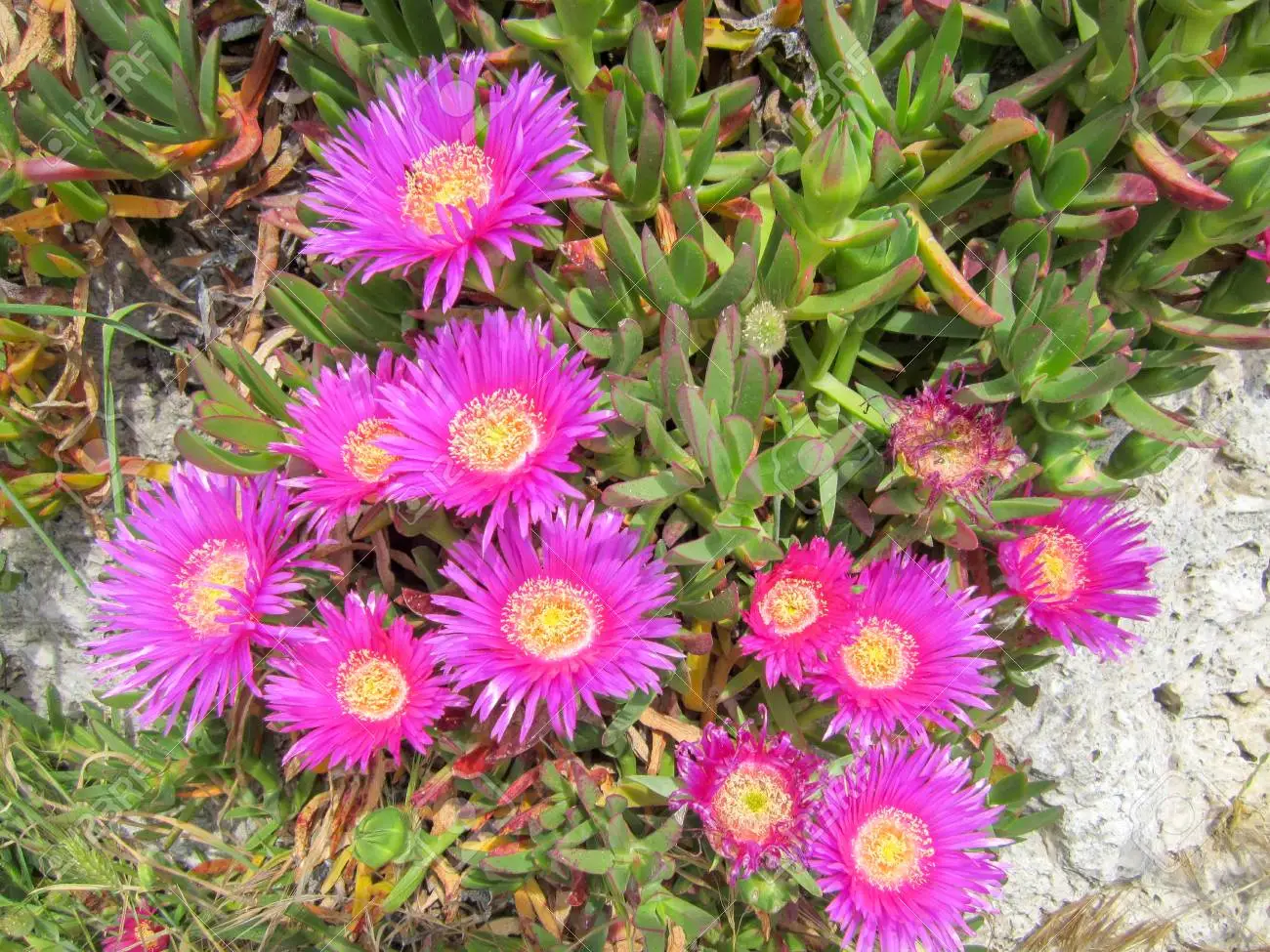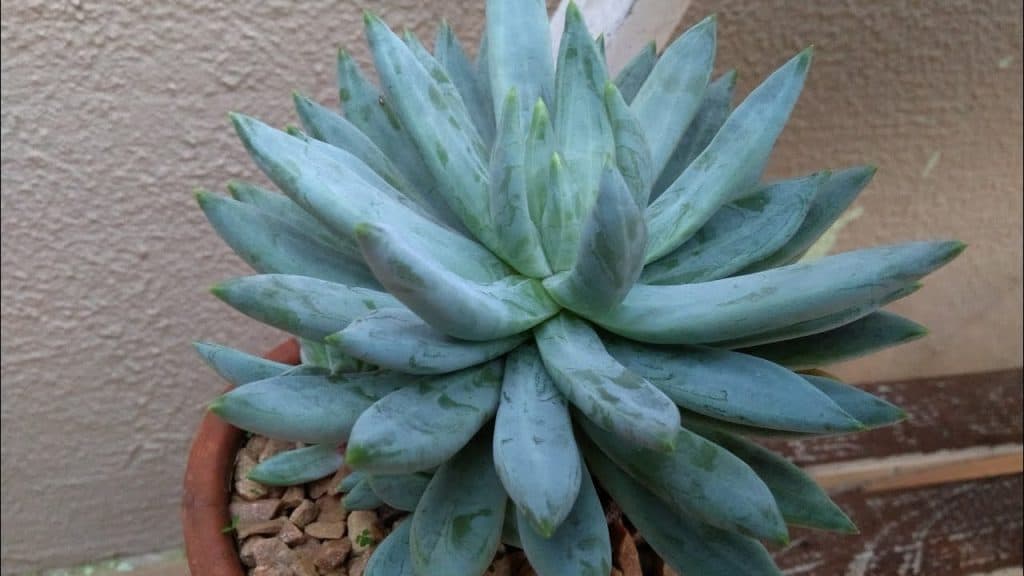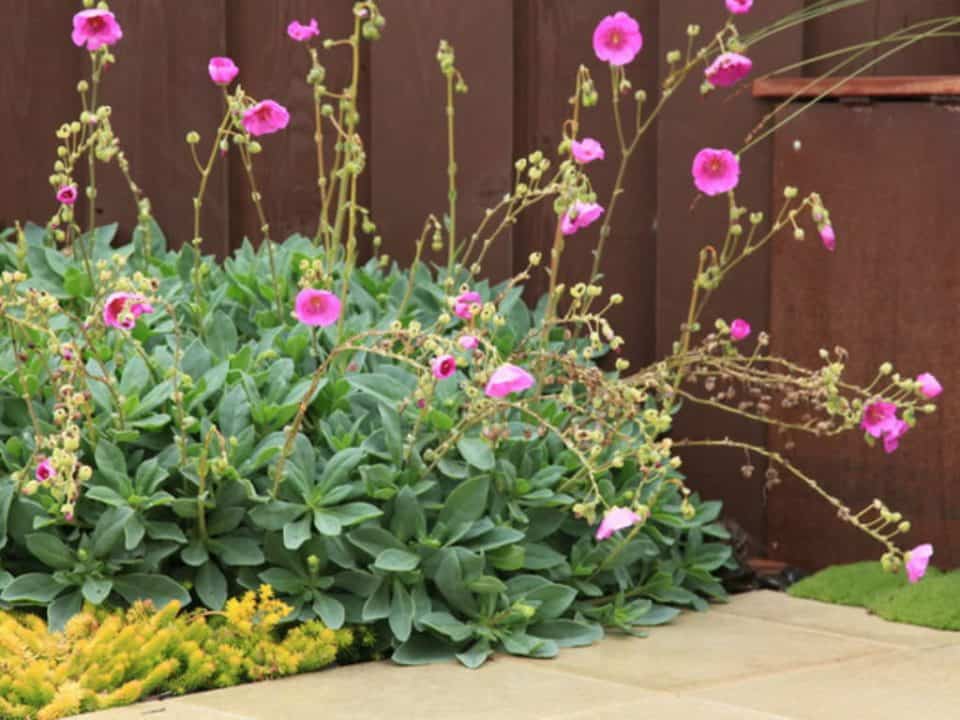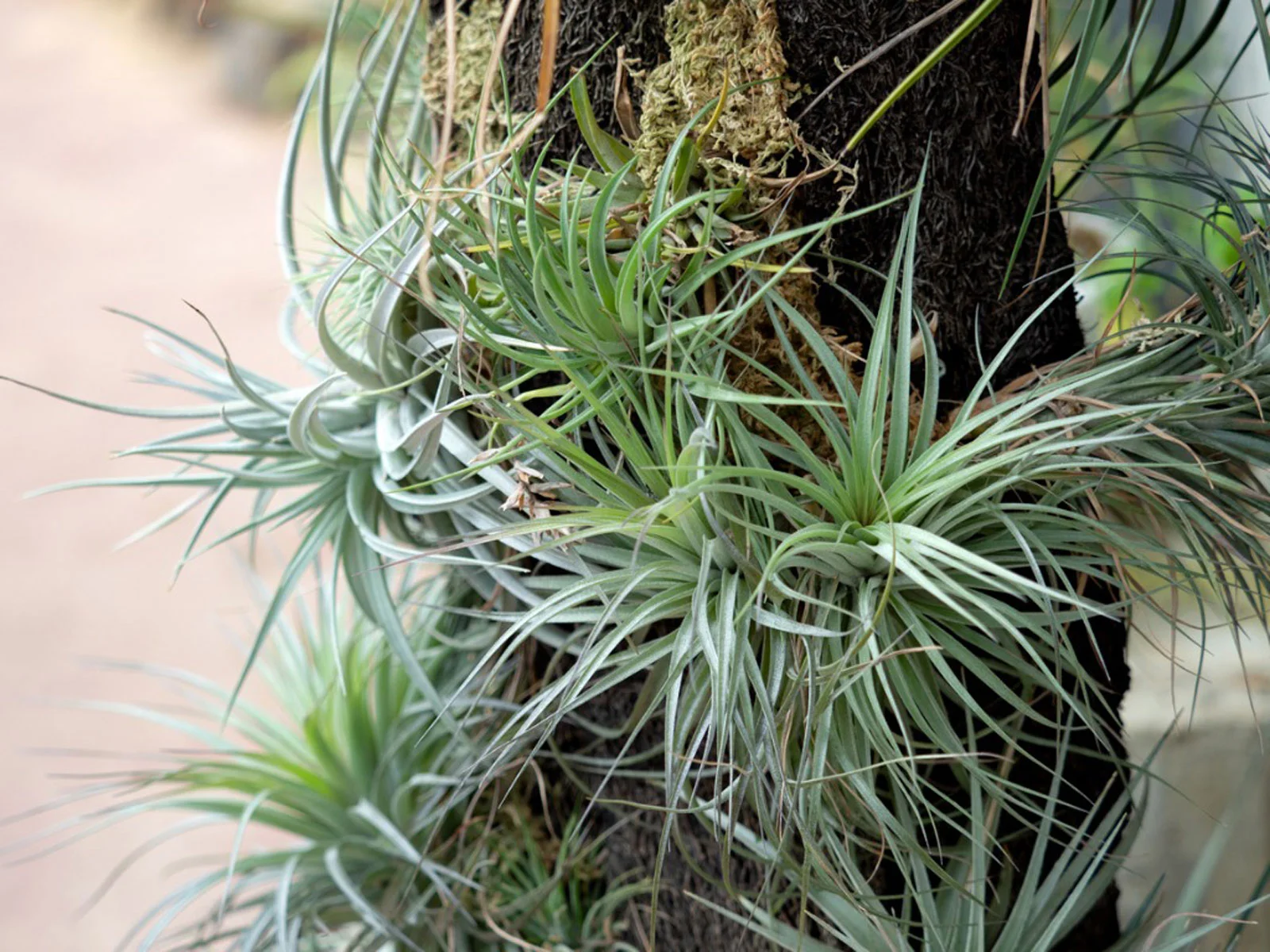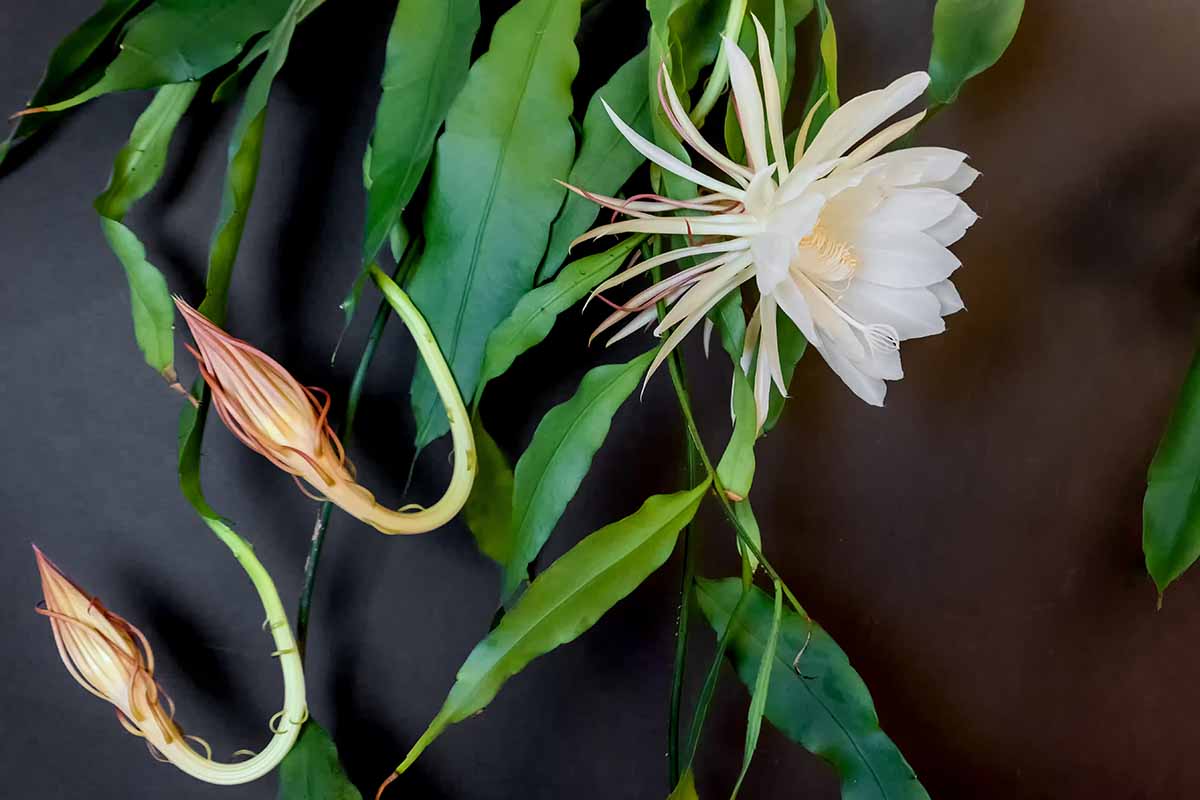Delosperma cooperi, commonly known as the trailing ice plant succulent, hardy ice plant, pink carpet plant, cooper’s ice plant succulent, or Mesembryanthemum cooperi, is one of many beautiful succulents that can be added to your home to add color and texture.
They can be grown outdoors as an annual in cold climates or indoors year-round as a perennial if you have an abundance of natural light. The most common varieties are red-orange colored with green stripes and dots, but you can also find white and pink varieties as well as various bicolored combinations of the three colors.
Trailing Ice Plant (Delosperma cooperi) is an attractive ground cover plant with green leaves and purple flowers, although the flowers are quite small. Since it doesn’t get very tall, you can use this trailing succulent as ground cover in areas that might not otherwise be covered by plants.
If you have plenty of sunlight and mild to warm weather, try growing this plant in your yard or garden for an appealing addition to your landscaping that won’t take up too much space.
Delosperma cooperi is one of the most popular and beautiful succulents in South Africa with lovely blue-white flowers and attractive, light green foliage. It requires very little care and is perfect as an indoor plant because it’s easy to propagate.
Origin and distribution
Delosperma cooperi originates from Cape Province, South Africa. It has spread throughout Southern Africa and is cultivated worldwide as a ground cover in milder climates (USDA zones 8 to 10).
In cooler regions, it is grown in containers or on a green roof. It can be found for sale at most garden centers and nurseries where mesembs are sold. While many of these plants are native to South Africa, they have naturalized in many parts of Australia and other countries around the world.
This means that they have not been introduced by humans but instead arrived naturally via wind, birds, insects, etc., which explains why they grow so well in places like Oahu. They also tend to reproduce very quickly once established which means we often see them growing along roadsides and trailheads with little effort involved on our part!
Delosperma cooperi propagation
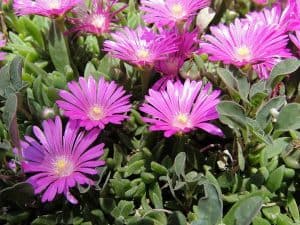
They are fairly easy to propagate from cuttings, new plants can also be grown from seed, and germination is very easy. Seeds should be sown in well-drained soil that has been pre-fertilized with compost or manure.
They will grow much faster in soil that is rich with organic matter such as peat moss. Soak seeds overnight before planting them.
It is important not to let them dry out while they are sprouting. Seedlings can be transplanted after they have their second set of true leaves. If you want to start your plants indoors, sow your seeds about six weeks before transplanting them into your garden.
Transplanting is best done on cloudy days or at night when temperatures are cooler. Make sure that you harden off your new transplants by gradually exposing them to the full sun over a period of two weeks prior to transplanting them into your garden. You can also plant Delosperma cooperi directly outdoors during late spring or early summer.
Delosperma cooperi requires light shade in hot climates, partial shade in warm climates and full sun in cool climates. It prefers well-drained soils that are neutral to slightly alkaline (pH 6–7).
When growing ice plants indoors, use a fast-draining potting mix (such as cactus mix) instead of regular potting soil which tends to retain too much moisture for these succulents.
Delosperma cooperi care information
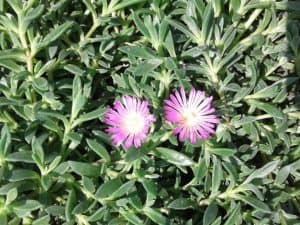
Provide a sunny location with well-drained soil. Water only when dry and feed monthly during summer months with 1/4 strength general purpose fertilizer. After blooming, gradually reduce watering to every other week until fall. During the winter months, remove old flower heads for a tidy appearance.
Delosperma cooperi can be propagated by cuttings or seed. If using seeds, sow indoors in spring 6 weeks before the last frost date. Pinching is not necessary but if desired, pinch back after the flowers fade.
Light requirement
Delosperma cooperi is a trailing plant that requires bright light, but it also grows well in partial shade. It prefers to be kept away from hot or cold drafts and direct sunlight.
As long as you keep it out of direct sunlight, you can place your plants anywhere they will receive at least four hours of indirect sunlight per day. If you are growing them indoors, they will grow best if placed near a window with some indirect sunlight coming through.
Soil/potting mix
Delosperma cooperi is an extremely popular trailing plant that hails from South Africa. It’s been cultivated for decades, but has recently gone by many other names such as Mesembryanthemum cooperi, pink carpet plant, and hardy ice plant.
It’s a relatively low-maintenance succulent that will produce pinks, oranges, and whites in a shaded area of your garden or indoors in brighter light with moderate water.
Watering
Hardy ice plant thrives in hot and dry weather, but you will want to water them during growth periods. Even if they are not thirsty, daily watering is a good idea. Give them a light watering with a spray bottle every day.
This will give their roots plenty of water and keep their stems from drying out. Once these plants begin blooming, you may stop watering. Allow them to set seed before stopping altogether.
Fertilizer
If you’re in an area with low rainfall, a dilute fertilizer solution may be required to help feed your plants. If they are growing in dry soil, apply a dilute fertilizer solution (1 teaspoon of regular fertilizer per 1 gallon of water) every couple of weeks during spring and summer.
If you’re growing Delosperma cooperi trailing ice plants in containers or for indoor use, you can supplement with an occasional liquid houseplant fertilizer at half strength once or twice a month.
Temperature
While most succulents can tolerate cold temperatures well, Delosperma cooperi is a truly frost-tolerant succulent. It’s even used in some regions as ground cover to protect vulnerable plants and reduce soil erosion.
Cooper’s ice plant thrives in USDA hardiness zones 6 through 10. While it will start to lose its leaves at around 32 degrees Fahrenheit (-0.5 Celsius), it’ll usually regrow new ones after winter has passed.
Humidity
Delosperma cooperi requires well-drained soil and humidity between 40-70% for optimal growth. Water regularly, but don’t overwater. The trailing ice plant does not like soggy soil, so be careful to not let it sit in water or wet dirt for long periods of time.
Pruning
Summer is pruning time for many plants, including some succulents and cacti. I tend to associate succulents with desert-like conditions, but most of them actually require regular pruning throughout summer to look their best.
Although some species (particularly those grown as houseplants) have little need for pruning, most will grow in better form and with more vigor if they are given a little love in June or July.
Prune by cutting off any leaves that appear brown or bleached, then trim back stems to encourage new growth. If you’re not sure how much to cut off, err on the side of too little—you can always cut more later!
Use sharp shears for precision cuts and avoid damaging stems with your fingernails when possible. For large branches, use clippers instead of scissors; clipping prevents tearing at weak points where branches join larger stems.
When to repot
If your Delosperma cooperi is getting leggy and no longer fills out its container, it’s time to repot. These trailing ice plants are slow-growing ground covers, so don’t be in a rush to repot them. If you notice any roots sticking out of their drainage holes or if they look like they need some space to spread out, that’s probably a good sign it’s time for a bigger pot.
For most plants, waiting until there’s about 1/2 inch (1 cm) of space between the soil and the rim of a pot before repotting is usually ideal. But since these trailing ice plants grow slowly, it may take several years before you even have to think about repotting them.
Dormancy
Succulents and cacti will experience dormancy, an annual period of rest. This is not a sign that they are dying or need to be watered, but rather a normal part of their natural growth cycle. When an individual succulent enters dormancy, its leaves may yellow and fall off or shrivel. In addition, its overall appearance can become less lush and attractive for several months.
Delosperma cooperi flowers & fragrance
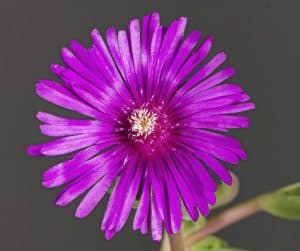
Delosperma cooperi flowers are not particularly showy—but they do have a delicate and perfume-like fragrance that makes them extremely popular among gardeners. One of their biggest draws is that the trailing ice plant looks pretty much like a perennial, even when it’s not in bloom.
Its stems are green year-round and its light pink flowers usually emerge between April and June; when summer ends, these flowers fade away but new shoots will appear to replace them in late autumn or early winter.
Growth rate
Cooper’s Ice Plant is a fast-growing, trailing succulent. It spreads out horizontally, cascading down your terrace or balcony, and can easily be trimmed as it approaches your home. Place in full sun and wait for it to take off! This succulent has no known pests that affect its growth rate. As long as you place it in a potting mix with good drainage, or on a raised bed of soil, you shouldn’t need to worry about it dying on you.
Toxicity
Delosperma cooperi is a non-toxic, attractive plant that thrives on neglect.
USDA Hardiness Zones
Delosperma cooperi thrives in USDA hardiness zones 10-11. In colder areas, it is best to grow the trailing ice plant as an annual. In warmer areas, it can be grown as a perennial and will bloom year after year.
Pests and diseases
Although it’s not susceptible to many diseases, Delosperma cooperi is vulnerable to other pests like aphids and mealybugs. These soft-bodied insects suck juices from your plants, which can cause leaves to shrivel up and even die, so you need to take action quickly if you notice any of these bugs or their eggs on your plant’s stems and leaves.
A forceful spray of water should do the trick in knocking these pests off and reducing their numbers in a short amount of time.
Conclusion
In conclusion, if you have a garden area that is lacking color and looking for something exciting, there are few choices in flowers that can deliver as much color and impact as Delosperma cooperi.
Although it is not meant to be a perennial plant, you can ensure its survival by giving it shelter from other plants that may compete with it for sunlight. When placed in a well-lit position year after year, you will begin to see flowers bloom from spring all the way through late fall!
